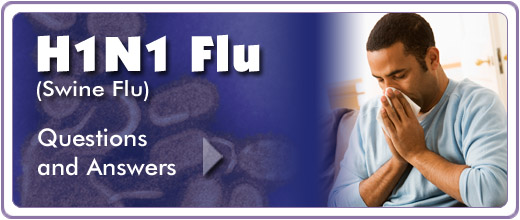The Centers for Disease Control and Prevention provides important and up-to-date information to the public and health care providers on the recent outbreak of swine influenza in humans. Interim CDC Guidance for Clinicians & Public Health Professionals regarding case identification, Infection Control for Care of Patients with Confirmed or Suspected Swine Influenza A (H1N1) Virus Infection in a Healthcare Setting, mask and respirator use, and other topics pertinent to dental health care providers can be found by going to the main CDC swine flu website at -- http://www.cdc.gov/swineflu/ and going to Guidance for Professionals. This information will be updated regularly and may change on a daily basis; check frequently with the CDC Swine flu websites for the latest information.
Dental health care providers are urged to view the main CDC swine flu webpage for the latest updates but frequently asked questions by dental providers have been:
- what to do if a patient presents for routine treatment and has acute respiratory symptoms with or without fever?
- what to do if a patient with acute respiratory symptoms requires urgent dental care?; and
- what to do if staff report to work with acute respiratory symptoms?
Overview
Prevention of Disease Transmission in the Dental Healthcare Setting
Patients with an acute respiratory illness may present for dental treatment at outpatient dental settings. The primary infection control goal is to prevent transmission of disease. Early detection of a suspected or confirmed case of swine influenza and prompt isolation from susceptible persons will reduce the risk of transmission. To prevent the transmission of respiratory infections in healthcare settings, including influenza, respiratory hygiene/cough etiquette infection control measures should be implemented at the first point of contact with a potentially infected person.
Infection control issues during patient assessment
- Patients with an acute respiratory illness should identified at check-in and be placed in a single-patient room with the door kept closed.
- Offer a disposable surgical mask to persons who are coughing or provide tissues and no-touch receptacles for used tissue disposal.
- The ill person should wear a surgical mask when outside of the patient room.
- Dental Healthcare Personnel assessing a patient with influenza like illness should wear disposable surgical facemask*, non-sterile gloves, gown, and eye protection (e.g., goggles) to prevent direct skin and conjunctival exposure. These recommendations may change as additional information becomes available, so check the CDC website for updates (http://www.cdc.gov/swineflu/guidelines_infection_control.htm)
- Patient and dental healthcare workers should perform hand hygiene (e.g., hand washing with non-antimicrobial soap and water, alcohol-based hand rub, or antiseptic handwash) after having contact with respiratory secretions and contaminated objects/materials.
- Routine cleaning and disinfection strategies used during influenza seasons can be applied to the environmental management of swine influenza. More information can be found at http://www.cdc.gov/ncidod/dhqp/gl_environinfection.html.
*Until additional, specific information is available regarding the behavior of this swine influenza A (H1N1), the guidance in the October 2006 “Interim Guidance on Planning for the Use of Surgical Masks and Respirators in Healthcare Settings during an Influenza Pandemic” is being recommended at this time and reflected in the above recommendations. These interim recommendations will be updated as additional information becomes available.
Frequently Asked Questions
What to do if a patient presents for routine treatment and has acute respiratory symptoms with or without fever? If the dentist suspects the illness could be due to swine influenza (symptoms include fever, body aches, runny nose, sore throat, nausea, or vomiting or diarrhea) elective dental treatment should be deferred and the patient should be advised to contact their general health care provider. The general health care provider will determine whether influenza testing or treatment is needed. Refer to http://www.cdc.gov/swineflu/guidelines_infection_control.htm for case definition and other information.
What to do if a patient with acute respiratory symptoms requires urgent dental care?
If urgent dental care is required and swine flu has either been confirmed or is suspected, the care should be provided in a facility (e.g., hospital with dental care capabilities) that provides airborne infection isolation (i.e., airborne infection isolation room with negative pressure air handling with 6 to 12 air changes per hour).
For aerosol-generating procedures, use a procedure room with negative pressure air handling. Personnel providing direct patient care for suspected or confirmed swine influenza A (H1N1) cases should wear a fit-tested disposable N95 respirator when entering the patient room and when performing dental procedures. Respirator use should be in the context of a complete respiratory protection program in accordance with Occupational Safety and Health Administration (OSHA) regulations. Information on respiratory protection programs and fit test procedures can be accessed at www.osha.gov/SLTC/etools/respiratory.
What to do if staff report to work with acute respiratory symptoms?
- Staff experiencing influenza-like-illness (ILI) (fever with either cough or sore throat, muscle aches) should not report to work.
- Staff who experience ILI and wish to seek medical care should contact their health care providers to report illness (by telephone or other remote means) before seeking care at a clinic, physician’s office, or hospital.
- Staff who were not using appropriate personal protective equipment during close contact with a confirmed, probable, or suspect case of swine influenza A (H1N1) virus infection during the case’s infectious period should receive chemoprophylaxis according to CDC guidance (http://www.cdc.gov/swineflu/recommendations.htm).
- Staff who have difficulty breathing or shortness of breath, or are believed to be severely ill, should seek immediate medical attention.
Summary
Respiratory hygiene/cough etiquette infection control measures along with contact precautions are currently recommended for preventing transmission of swine influenza in a dental healthcare setting. CDC is working very closely with officials in states where human cases of swine influenza A (H1N1) have been identified, as well as with health officials in Mexico, Canada and the World Health Organization. This is a rapidly evolving situation and CDC will provide updated guidance and new information as it becomes available.
|


